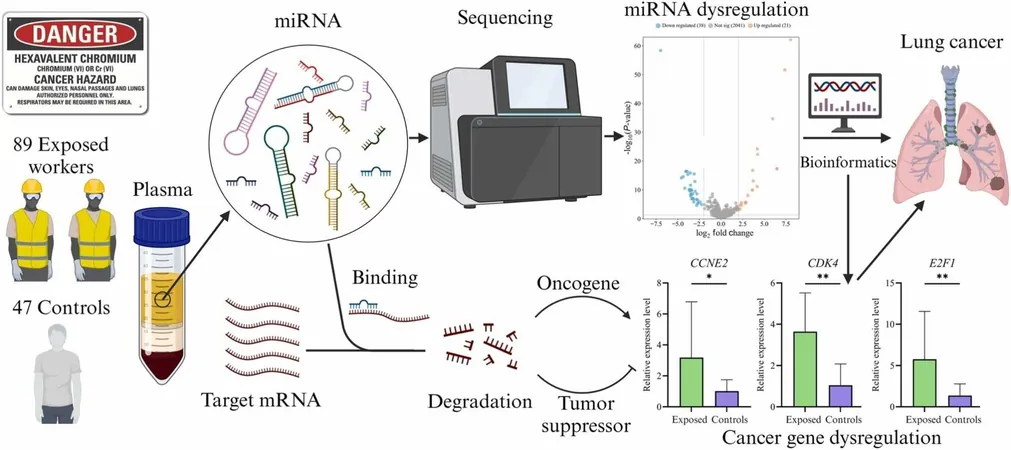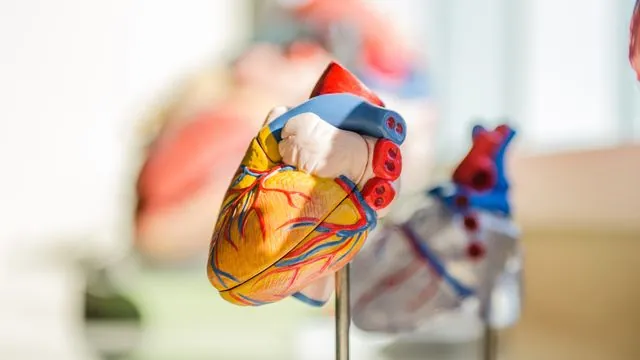
Shocking Discovery: Hexavalent Chromium Changes Bodies Even Below Safety Limits, Calls for Urgent Guidelines Update!
2025-04-02
Author: Wei Ling
Introduction
In Sweden, approximately 18,000 workers are exposed to the dangerous substance known as hexavalent chromium, a potent carcinogen often released during activities like stainless steel welding and manufacturing of paints and rustproofing agents. Alarmingly, a recent study from Lund University has uncovered that cellular changes occur in these workers even when their exposure is below the established safety limits, prompting calls for an urgent revision of current carcinogen guidelines.
Current Safety Limits
For the past three decades, Sweden's legal limit for hexavalent chromium has been set at 5 micrograms per cubic meter of air—an arbitrary figure based more on industrial capacity than on medical research about cancer risk. To put this into perspective, this threshold is an astonishing five hundred times higher than what is considered acceptable for carcinogens in outdoor environments.
Call for Reevaluation
Karin Broberg, a distinguished professor of occupational and environmental medicine at Lund University, argues for a reevaluation of these guidelines. She emphasizes that "a reduction of the limit is necessary" to better protect workers from undue harm.
Study Findings
The pivotal study, published in the esteemed Journal of Hazardous Materials, involved the collection of breath, blood, and urine samples from 89 workers exposed to hexavalent chromium, alongside a control group of 47 individuals not exposed to the toxin. Astonishingly, over 90% of these workers had been operating under the current limit, with the majority (80%) below a proposed new limit of 1 microgram per cubic meter. Yet, the research reveals that these seemingly low levels still lead to significant cellular changes that can be precursors to lung cancer.
MicroRNA Changes
One of the key findings of the study was a noticeable alteration in workers' microRNA profiles—a group of small molecules that play a crucial role in gene regulation. These changes may serve as harbingers of cancer, providing vital insights into how serious diseases like lung cancer can develop over time. As microRNAs are integral to cellular signaling, they offer promising potential as biomarkers for disease progression.
Implications for Health Surveillance
The implications of this research are profound. By recognizing these early molecular alterations, health surveillance for at-risk workers can be enhanced, potentially leading to stricter safety protocols and regulations. However, a greater understanding of the predictability of these changes regarding cancer risk is crucial. Further research is needed to determine if these alterations are reversible and how effectively they can forecast health outcomes.
Conclusion
As awareness grows and the call for updated safety measures becomes more urgent, this groundbreaking study sheds light on the hidden dangers of workplace exposure to hexavalent chromium. The stakes are high, not only for the 18,000 affected workers in Sweden but potentially for industries across the globe. Will regulators rise to the challenge and protect the health of workers before it's too late?



 Brasil (PT)
Brasil (PT)
 Canada (EN)
Canada (EN)
 Chile (ES)
Chile (ES)
 Česko (CS)
Česko (CS)
 대한민국 (KO)
대한민국 (KO)
 España (ES)
España (ES)
 France (FR)
France (FR)
 Hong Kong (EN)
Hong Kong (EN)
 Italia (IT)
Italia (IT)
 日本 (JA)
日本 (JA)
 Magyarország (HU)
Magyarország (HU)
 Norge (NO)
Norge (NO)
 Polska (PL)
Polska (PL)
 Schweiz (DE)
Schweiz (DE)
 Singapore (EN)
Singapore (EN)
 Sverige (SV)
Sverige (SV)
 Suomi (FI)
Suomi (FI)
 Türkiye (TR)
Türkiye (TR)
 الإمارات العربية المتحدة (AR)
الإمارات العربية المتحدة (AR)